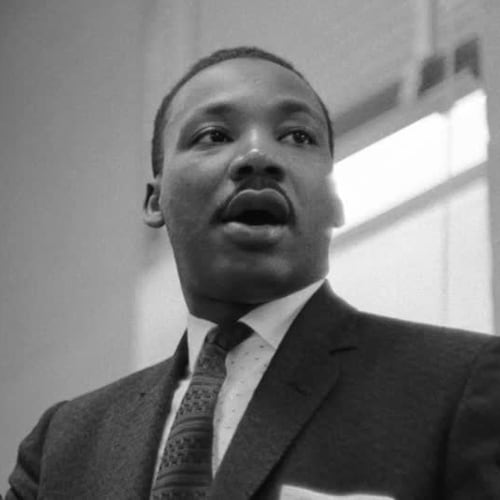This story was originally published in 2022. For our complete Black History Month coverage, click here.
What is Stone Mountain?
The meaning of symbols, statues and iconography are in the eye of the beholder.
They can be a way of highlighting a particular value, person or historical event.
But the same symbol can mean different things to different people at different times. And one of the biggest symbols in this state (and literally the largest monument to the Confederacy in the world) is Stone Mountain.
So I set out to learn not only the history of Stone Mountain, but also what it means to people. The people who started it, finished it, and the people who live there now. Before digging into what the carving means, I think it’s important to understand how it got there. For that, I spoke to an Atlanta History Center historian, Gordon Jones, who told me the popular 1915 movie, “The Birth of a Nation,” started this idea.
In the film, the Ku Klux Klan goes to the top of Stone Mountain for a “rebirth.” The silent movie, through its technological innovations, changed cinema. It was the first motion picture to be screened inside the White House, where President Woodrow Wilson was so impressed he said it was “like writing history with lightning.”
This movie also inspired Helen Plane, a charter member of the United Daughters of the Confederacy and the president of the Atlanta Chapter.
Plane saw what Stone Mountain did for the Ku Klux Klan and wanted the same for the confederacy. She wanted a second chance and saw the carving as an opportunity to rewrite history.
Credit: Acme Telephoto
Credit: Acme Telephoto
To make this carving happen, Plane founded Stone Mountain Confederate Monument Association. She planned to carve three confederate figures: Jefferson Davis, Robert E. Lee and Thomas Jonathan “Stonewall” Jackson on the side of the 300-million-year-old piece of exposed granite. She also suggested the Klansmen from the movie get carved into the mountain as well. But in 1928 the association ran out of money. The entire nation was in an economic downturn, as this was around the same time as The Great Depression then leading into World War II.
At this point, construction stopped and the state of Georgia barely had Robert E. Lee’s head on the side of the mountain. But, Jones told me construction started again “in the 1950s after Marvin Griffin was elected governor and promised to restart the Stone Mountain carving. Because to him and in his mind, Confederate statuary and the Confederate cause would help him politically with his voters who were definitely opposed to desegregation. The carving started again in 1964, not really completed and signed off on in 1972.”
These dates are important because they give context to how people thought about Stone Mountain then. In 1954, the U.S. Supreme Court ruled racial segregation illegal with the Brown vs. Board of Education decision.
Credit: HYOSUB SHIN / AJC
Credit: HYOSUB SHIN / AJC
Two years later. Griffin knew it would be politically beneficial to channel that resulting white rage into an effigy of white supremacy.
But for Plane and Griffin, Stone Mountain meant different things.
For Plane, the carving was going to be an attempted rewrite of history. The last gasp of air for a dying cause.
For Griffin, it was a repudiation of integration and a way to harness white supremacy for political points, which was trickier than it might sound as we look at the future of Stone Mountain.
In order to do that I had to understand what legally constitutes “Stone Mountain.”
I spoke with Sheffield Hale, CEO of the Atlanta History Center, who gave me some background on what the state considers Stone Mountain.
The Stone Mountain Memorial Association was formed by the state to manage the park after it was purchased in 1958 as a memorial to the Confederacy.
“That memorial to the Confederacy piece applies to all 3,200 acres at the park. So the whole park, we’re not just talking about the carving, which is huge as itself, right? The whole,” Hale told me. “It is a memorial to the Confederacy and intended to be a memorial on behalf of all the citizens of Georgia. To me, that is the first issue that you should look at before you talk about the carving in its future.”
“Stone Mountain, by law, needs to be a memorial to the confederacy. Also, have you ever wondered why Memorial Drive is named Memorial Drive? Because if you drive up that road, you’ll end up at Stone Mountain, a memorial to the Confederacy.”
Because the property is state owned, there are a few options: Leave it as-is, have nothing changed; tear it all down, meaning no longer have anything related to the confederacy there; or, add more information and context around what Stone Mountain is and how it came to be.
All residents don’t agree the carving on Stone Mountain is on their behalf. And some would like to see changes.
What does Stone Mountain mean to you? What do you think should be done with it?
About the Author
The Latest
Featured


